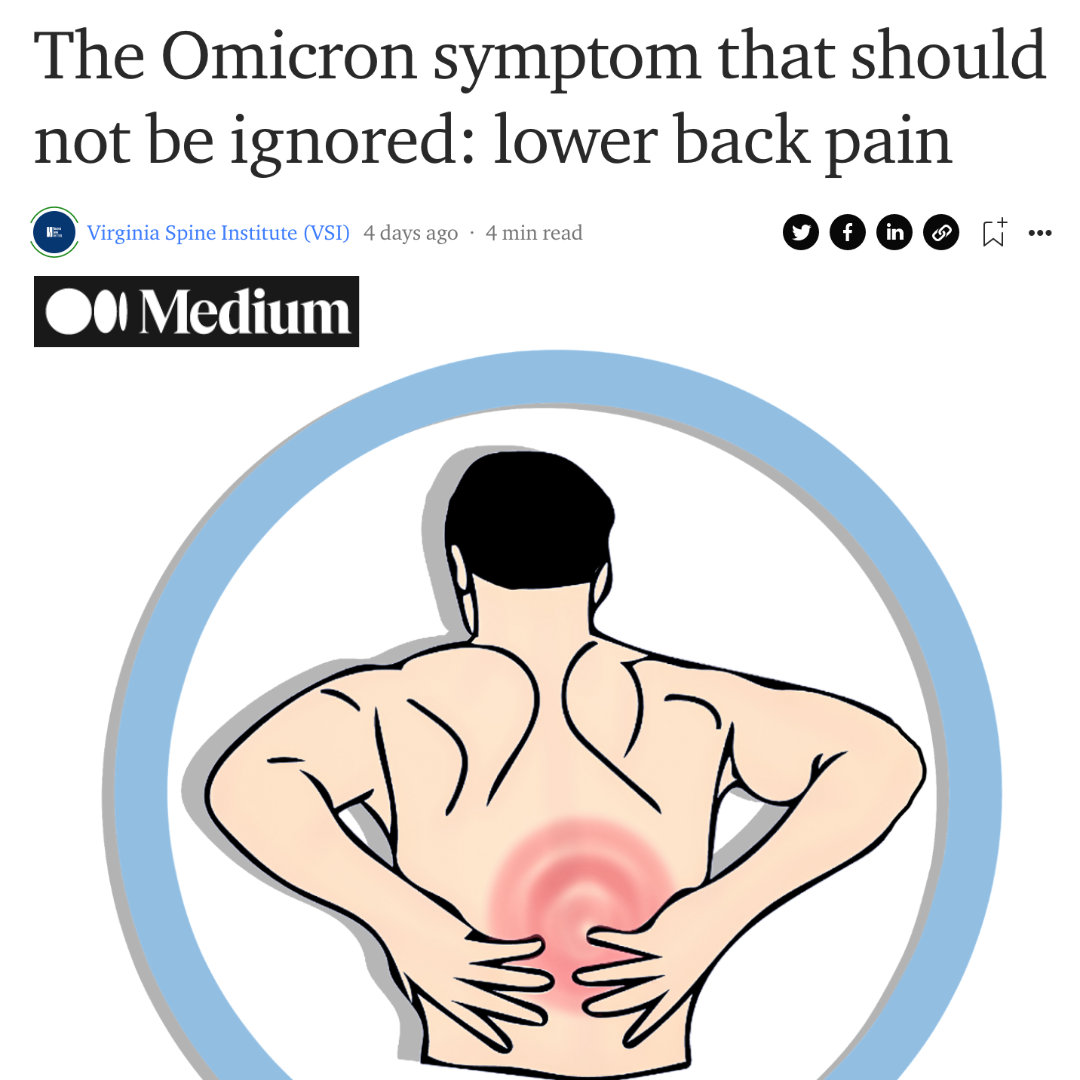
The Omicron Symptom That Should Not be Ignored: Lower Back Pain
Lower back pain has been identified as one of the primary symptoms of the Omicron variant. Experts analyzing new data out of the US, UK, and South Africa say people are experiencing several new symptoms with the Covid variant, including lower back pain. To make matters worse, many people are exercising less and have become more sedentary at this point in the pandemic – whether it’s from sickness, isolation, or working from home once again due to rising Covid cases across the country.
If you are among those living with lower back pain – what can you do about it?
3 Ideas to Alleviate Back Pain
Move Whenever Possible
Rest is critical when you don’t feel well. But staying in the same position for too long tightens the body up. That’s not helpful when you’re already dealing with Covid related back pain.
So build in breaks to get up and move whenever possible during your day. If you’re isolating or quarantining and can’t head to the gym, there’s still a lot you can do around your home. Have exercise equipment? Great! Use it! Try an exercise video on YouTube – even a 10-minute yoga or stretch will loosen you up. Use a yoga mat if possible so you don’t slip on a thin rug. I recommend one made from non-toxic materials that are thick, soft, and cushiony with a textured non-slip surface.
If you don’t feel up for that level of movement – at least do a few stretches each time you go to the kitchen. Reach your arms into the air. Arch your back. Bend over slowly and touch your toes and hold it. Try a few slow twists too – those can be great to loosen up your back.
Pay Attention to How you Sleep and Rest
When you’re dealing with lower back pain associated with the Omicron variant, long periods of time on the couch or in bed can exacerbate the pain, making it worse.
So do everything you can to maintain your spine’s natural alignment while in bed. The spine is made up of several curves that need to be supported; for example, the swayback in our low back region is called, “lordosis.” For some people, a soft mattress may support their body type best. As an example, a thin individual may prefer this. Individuals who carry more weight should identify where their pressure points are when they lay down, then avoid any mattress that adds extra pressure to those areas during sleep.
Placing a pillow under your knees can also help remove tension from your back and allow for more natural alignment during sleep.
Invest in a Few Tools to Support Back Health
There are lots of products out there that can help when you’re dealing with back pain. One of the best is a foam roller. They come in all shapes, designs, and sizes, are easy to use and adapt to wherever you have sore muscles. Lie on it, lean on it or have someone roll it over your sore muscles or knots and it will penetrate soft tissue, increase blood flow and reduce pain and soreness. This can provide instant relief to strained muscles not only in the back but also in the legs, arms, and feet – all of which can make your lower back feel better.
Step it up a notch with a back massager. There are a ton of products on the market and you don’t want to overdo it with them. But if you are just dealing with sore muscles, these devices can really loosen things up. It’s nice if you can find one where the massage nodes move in multiple directions.
When you’re sedentary for a while, that can contribute to tight hamstrings. Stretching the foot can help relieve pain in your calves while alleviating lower back pain.
And don’t forget that heat and ice can be helpful tools too. Try out both to see which makes you feel better. Sometimes heat can do wonders for soothing sore muscles. Don’t overdo it – no more than 20 minutes at a time. Putting ice on your lower back can also provide great relief – just make sure you wrap the ice in something rather than putting it right on your skin.
Topics covered
About the Author
Featured Resources
Insights to Achieve a Pain-Free Life



